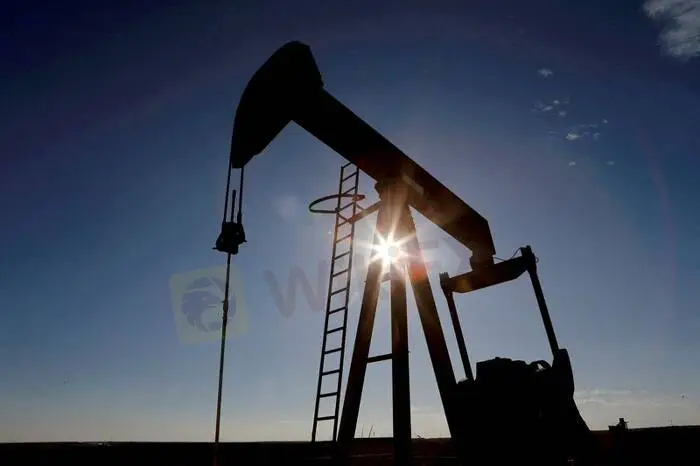简体中文
繁體中文
English
Pусский
日本語
ภาษาไทย
Tiếng Việt
Bahasa Indonesia
Español
हिन्दी
Filippiiniläinen
Français
Deutsch
Português
Türkçe
한국어
العربية
Oil rises to 7-year high as Turkey outage adds to tight supply outlook
Abstract:Oil prices rose for a fourth day to a seven-year high as an outage on a pipeline from Iraq to Turkey increased concerns about an already tight supply outlook amid worrisome geopolitical troubles in Russia and the United Arab Emirates.

Brent crude futures rose $1.44, or 1.7%, to $88.95 a barrel at 0230 GMT, adding to a 1.2% jump in the previous session. The benchmark contract climbed to as much as $89.05, its highest since Oct. 13, 2014.
U.S. West Texas Intermediate (WTI) crude futures climbed $1.51, or 1.8%, to $86.94 a barrel, adding to a 1.9% gain on Tuesday. WTI earlier jumped to a high of $87.08, its highest since Oct. 9, 2014.
Turkeys state pipeline operator Botas said on Tuesday that it cut oil flows on the Kirkuk-Ceyhan pipeline after an explosion on the system. The cause of the explosion is not known.
The pipeline carries crude out of Iraq, the second-largest producer in the Organization of the Petroleum Exporting Countries (OPEC), to the Turkish port of Ceyhan for export.
The loss comes as analysts are forecasting tight oil supply in 2022, driven in part by demand holding up much better than expected against the highly contagious Omicron coronavirus variant, with some calling for a return of $100 oil.
Geopolitical issues in Russia, the world‘s second-largest oil producer, and the UAE, OPEC’s third-largest producer, are adding to the supply concerns.
The UAE late on Tuesday called for a meeting of the United Nations Security Council to condemn an attack on Abu Dhabi on Monday by Yemens Houthi movement, which has threatened further attacks.
Meanwhile, Russian troops are lined up on the border of Ukraine, with the White House calling the crisis extremely dangerous and saying Russia could invade at any point.
The tensions raise the prospect of supply disruptions at a time when OPEC, Russia and their allies, together called OPEC+, are already having difficulty meeting their agreed target to add 400,000 barrels per day of supply each month.
“OPEC+ is falling short of hitting their production quotas and if geopolitical tensions continue to heat up, Brent crude might not need much of a push to get to $100 a barrel,” OANDA analyst Edward Moya said in a note.
Jet fuel consumption is rising with growth in international flights, while road traffic is much higher than the same time last year, Commonwealth Bank commodities analyst Vivek Dhar said in a note.
“OPEC+ supply constraints and the ongoing increase in global oil demand will likely keep oil prices well supported in coming months,” Dhar said.

Disclaimer:
The views in this article only represent the author's personal views, and do not constitute investment advice on this platform. This platform does not guarantee the accuracy, completeness and timeliness of the information in the article, and will not be liable for any loss caused by the use of or reliance on the information in the article.
Read more

FED meeting minutes strongly hint at a rate cut in September; US dollar index falls to new low this year!
The U.S. Bureau of Labor Statistics revised down the employment growth in the year ending in March by 818,000, an average monthly decrease of about 68,000, the largest downward revision since 2009. The substantial downward revision of employment data re-emphasized the severity and necessity of the U.S. employment problem, paving the way for a rate hike in September. Bearish for the U.S. dollar.

Guide to Trading News Releases & Navigating Market Volatility
Understanding when key news releases occur, identifying the most impactful ones, and effectively trading them while managing risk can set you apart from the competition. This article delves into these aspects, helping you navigate the complexities of trading forex on news releases.

What new signals does the Federal Reserve have? FED Governor Michelle Bowman reiterates the risk of inflation!
Fed Governor Bowman: There are upside risks to inflation, the labor market continues to strengthen, and a cautious attitude will be maintained at the September meeting. Boston Fed President Collins: If the data is as expected, it would be appropriate to start easing policy "soon". Inflationary pressure will slow down the pace of U.S. interest rate cuts, which will be bullish for the dollar.

How Does RSI Divergence Work in Trading: Top Cases
The Relative Strength Index, short for RSI, is primarily used to evaluate the strength of bullish and bearish forces and measure the momentum of price changes in terms of speed and magnitude.
WikiFX Broker
Latest News
Why Even the Highly Educated Fall Victim to Investment Scams?
Warning Against Globalmarketsbull & Cryptclubmarket
BSP Shuts Down Uno Forex Over Serious AML Violations
ACY Securities Expands Global Footprint with South Africa Acquisition
Tokyo Police Arrest 4 for Unregistered FX Trading Scheme
Rupee gains against Euro
Axi Bids AUD 52M to Acquire Low-Cost Broker SelfWealth, Outbidding Competitor Bell Financial
Crypto Influencer's Body Found Months After Kidnapping
US Regulators Tighten Oversight on Bank Anti-Money Laundering Efforts
Doo Group Expands Its Operations with CySEC License
Currency Calculator


